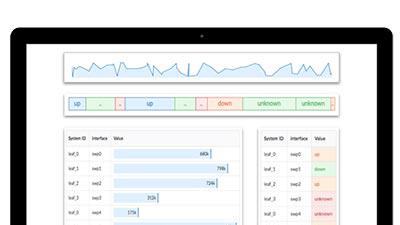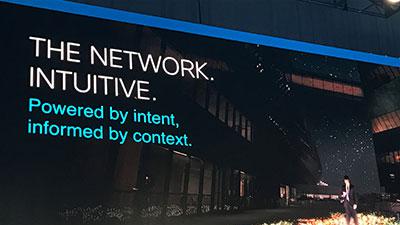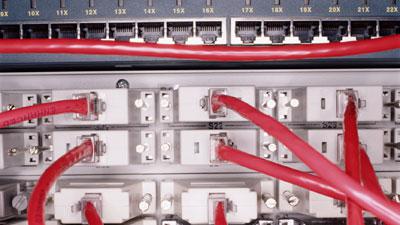CRN Interview: Apstra Engineering Chief On Driving Efficiency And Ending Lock-In With Vendor-Agnostic Intent-Based Networking
Apstra executive Manish Sampat tells CRN that bringing intent-based networking to multivendor environments is the key to freeing customers from vendor lock-in and helping them realize new efficiencies.

A Variety Of Choices
For Manish Sampat, vice president of engineering at intent-based networking startup Apstra, the end of vendor lock-in is near.
The Menlo Park, Calif., company's AOS platform brings the automation, orchestration, management and analytics capabilities of intent-based marketing to the multivendor data center environments common among the largest enterprises and SaaS companies.
Sampat, who joined Apstra recently after nearly seven years at Palo Alto Networks, argues that bringing intent-based networking, which automates data center management across the network, to multivendor environments is the key to freeing customers from the vendor lock-in of the past and realizing efficiencies that pave the way for growth.
"If the network is going to be operating by itself, you have a lack of vendor lock-in where you don't necessarily need to lock in to your existing vendor," Sampat said. "You have a variety of choices and you can do it more efficiently. The second thing is driving efficiencies. You don't need to know all the new network technology. The platform manages it for you. You can figure out other things and do things more efficiently."
What follows is an edited excerpt of Sampat's conversation with CRN.

What are the most important things for solution providers to know about intent-based networking?
When you start with intent, and you compose it right, we drive a huge amounts of efficiencies. For example, solution providers, if they know and they're the ones composing the network, they know what to monitor, they know what to collect and they know how to drive information. The context is built in. The network device is doing what it normally does, you let it do that. While it's doing that, if you know exactly what to collect, you can gain an order of magnitude in terms of insight. As solution providers look at Apstra and figure out what the use cases are, it could be any kind of data center. You could have a storage cluster, a compute cluster. Basically, what you need to collect changes in those cases. What you care about changes. If you know that and you start with intent, and you let the system manage it, you know exactly how your network devices are operating. You collect the right amount of information and drive it in a closed-loop fashion.

What attracted you to Apstra?
Having been part of Palo Alto Networks and having seen network orchestration with data center, and my background in network management and network security, if you look at that and look at where things are headed, that was a big driver in terms of my decision. I also looked at the technology at Apstra and the passionate team. I think that's extremely important. You have to have the right set of folks. The market has to be there, it has to be validated. Only then can you actually have some sort of success. That was a driver for me to join Apstra.

What makes Apstra's intent-based networking solution stand out?
It is a complete platform with closed-loop validation where you model the network reference design as a graph and you have this concept of live query, which allows you to not only model your intent, but build in reaction to it. Building that at scale and making it work is a tough challenge, but I think Apstra has it currently and we can build on that. That is significantly different.

Have you looked at solutions from competing vendors like Cisco, whether they're called intent-based or outcome-based?
I have been following the industry in general, and if you look at the completeness of the solution in terms of the platform, as well as the ability to do all of this in a single plane as far as extensibility, that's what AOS gives you. If you try to go with some of these others, you may have to combine stuff or integrate, which then causes friction points. You can say I have four tools that make it a complete solution, but you can always find 10 other tools that make it a more complete solution, maybe.

Why is that a challenge for other networking vendors?
It's hard if you have two different sets of tools trying to figure out what each other is doing. If you have everything as a platform, that's significant. What's also significant is the concept of intent-based analytics. You know the intent, so you know the context. You can compose your network in a way that you know exactly what to collect and take action on it. This is taking those actionable insights to a completely different level.

Where do you see the market for intent-based networking going? How will it develop?
As we go forward, and as this thing takes off and we get deployed in a variety of data centers, the costs savings for network operators would be the obvious benefit. That's what's going to drive the market. The simplicity of it, and having complete control over how the network is set up, that's going to be the driver to cost savings.

What are customers getting rid of when they adopt an intent-based networking approach? What are they spending on now that they don't have to worry about anymore?
The main things would be, if the network is going to be operating by itself, you have a lack of vendor lock-in where you don't necessarily need to lock in to your existing vendor. You have a variety of choices and you can do it more efficiently. The second thing is driving efficiencies. You don't need to know all the new network technology. The platform manages it for you. You can figure out other things and do things more efficiently.

Will the Apstra solution work in just about any customer environment?
The leaf-spine networks in data centers, that's where it's targeted at, and we'll build it out as per customer demand. It is a platform where it can be extended, but right now it is the leaf-spine networks, which is where it's getting deployed.